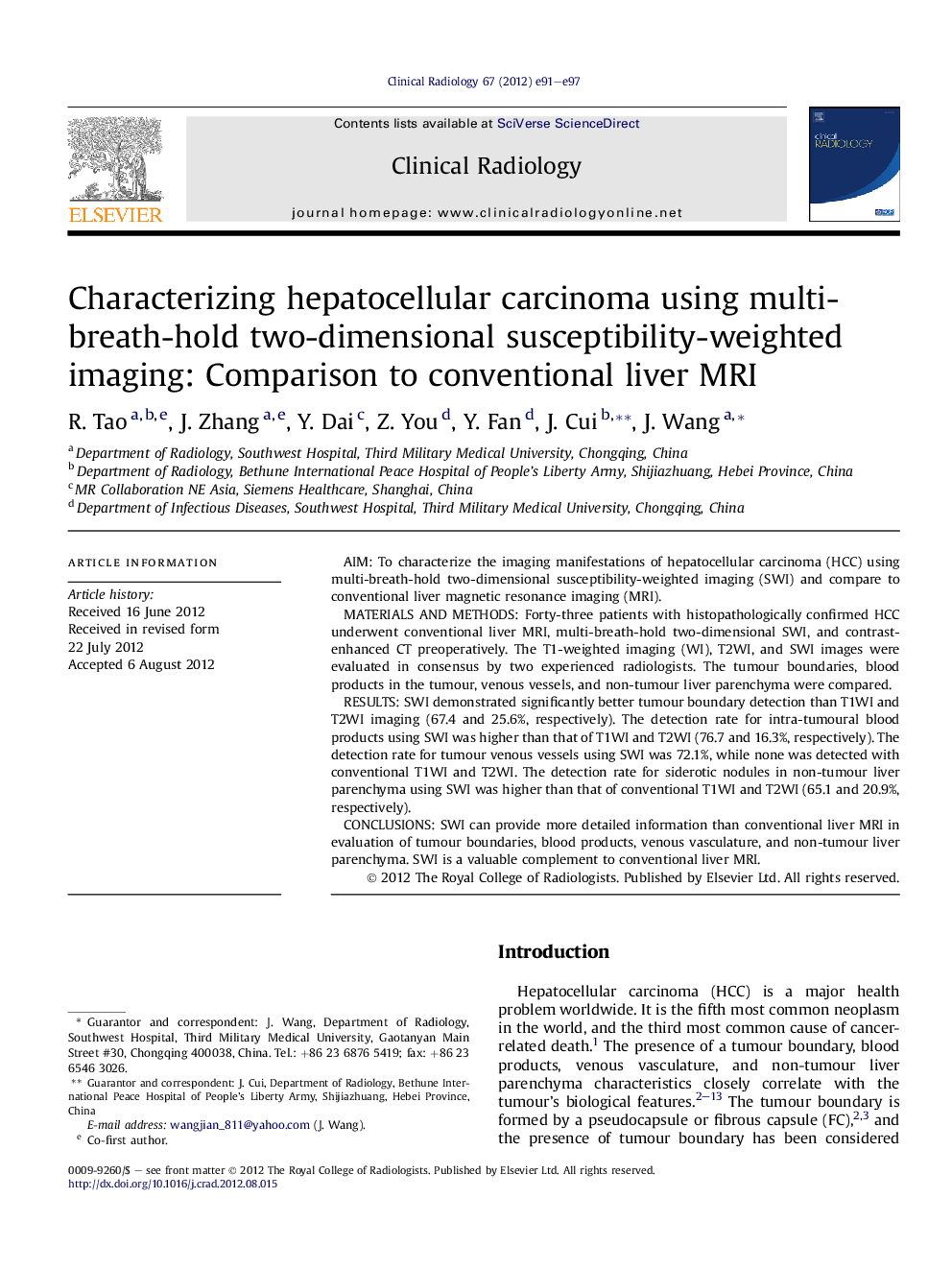| Article ID | Journal | Published Year | Pages | File Type |
|---|---|---|---|---|
| 3982879 | Clinical Radiology | 2012 | 7 Pages |
AimTo characterize the imaging manifestations of hepatocellular carcinoma (HCC) using multi-breath-hold two-dimensional susceptibility-weighted imaging (SWI) and compare to conventional liver magnetic resonance imaging (MRI).Materials and methodsForty-three patients with histopathologically confirmed HCC underwent conventional liver MRI, multi-breath-hold two-dimensional SWI, and contrast-enhanced CT preoperatively. The T1-weighted imaging (WI), T2WI, and SWI images were evaluated in consensus by two experienced radiologists. The tumour boundaries, blood products in the tumour, venous vessels, and non-tumour liver parenchyma were compared.ResultsSWI demonstrated significantly better tumour boundary detection than T1WI and T2WI imaging (67.4 and 25.6%, respectively). The detection rate for intra-tumoural blood products using SWI was higher than that of T1WI and T2WI (76.7 and 16.3%, respectively). The detection rate for tumour venous vessels using SWI was 72.1%, while none was detected with conventional T1WI and T2WI. The detection rate for siderotic nodules in non-tumour liver parenchyma using SWI was higher than that of conventional T1WI and T2WI (65.1 and 20.9%, respectively).ConclusionsSWI can provide more detailed information than conventional liver MRI in evaluation of tumour boundaries, blood products, venous vasculature, and non-tumour liver parenchyma. SWI is a valuable complement to conventional liver MRI.
